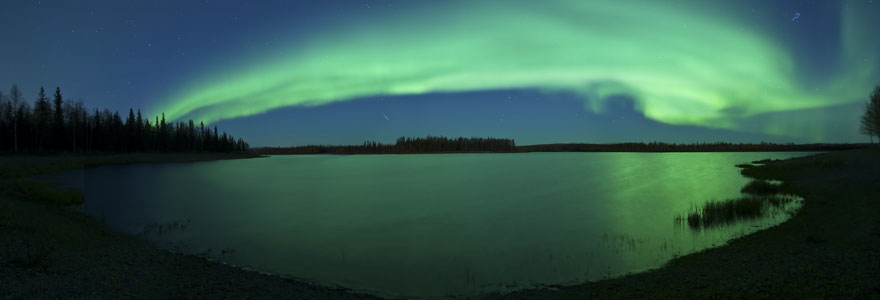
Auroras (North/South Polar Lights; or aurorae) are natural colored light displays, which are usually observed in the night sky, particularly in the polar zone. The aurora typically occur in the ionosphere. Some scientists call them "polar auroras" (or "aurorae polares"). In northern latitudes, it is known as the aurora borealis (or the northern lights), named after the Roman goddess of dawn, Aurora, and the Greek name for north wind, Boreas. It often appears as a greenish glow or sometimes a faint red, as if the sun was rising from an unusual direction. The aurora borealis is also called the northern polar lights, as it is only visible in the North sky from the Northern Hemisphere. The aurora borealis most often occurs from September to October and from March to April. The Cree call this phenomenon the Dance of the Spirits.
Its southern counterpart, the aurora australis/southern polar lights, has similar properties. Australis is the Latin word for "of the South".